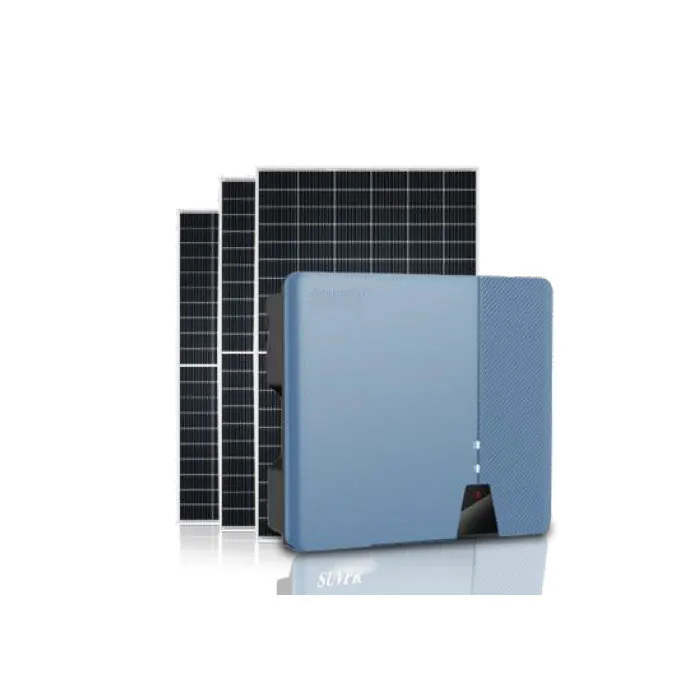Applications of On-Grid Solar System
2024-08-14
An On-Grid Solar System, also known as a grid-tied or grid-connected solar system, is a solar power system that is connected to the local utility grid. This type of system allows homeowners or businesses to generate their own electricity from solar panels while remaining connected to the utility grid for additional power when needed. It is the most common type of solar power system for residential and commercial applications.
Key Components:
1. Solar Panels:
- Function: Convert sunlight into direct current (DC) electricity. The panels are typically mounted on rooftops or ground mounts.
- Types: Monocrystalline, polycrystalline, or thin-film panels.
2. Inverter:
- Function: Converts the DC electricity produced by the solar panels into alternating current (AC) electricity, which is used by household appliances and fed into the utility grid.
- Types: String inverters, microinverters, or power optimizers.
3. Grid Connection:
- Function: Connects the solar system to the local utility grid, allowing excess electricity to be fed back into the grid and ensuring a continuous power supply from the grid when solar generation is insufficient.
4. Electric Meter:
- Function: Measures the amount of electricity consumed from the grid and the amount of excess electricity fed back into the grid. There are two types:
- Net Meter: Tracks both electricity consumption and production, allowing for net metering.
- Bi-Directional Meter: Measures electricity flowing in both directions.
5. Electrical Panel (Breaker Box):
- Function: Distributes the electricity from the solar system and the grid to various circuits in the building.
6. Safety Devices:
- Function: Includes devices such as circuit breakers and fuses to protect the system from electrical faults and ensure safe operation.
How It Works:
1. Solar Generation:
- Solar panels generate DC electricity from sunlight. This electricity flows through the system and is sent to the inverter.
2. DC to AC Conversion:
- The inverter converts the DC electricity into AC electricity, making it compatible with the electrical grid and household appliances.
3. Power Usage:
- The generated AC electricity is used to power appliances and lights in the building. If the solar system produces more electricity than is consumed, the excess electricity is fed back into the utility grid.
4. Grid Supply:
- When the solar system is not producing enough electricity (e.g., at night or during cloudy days), electricity is drawn from the grid to meet the building’s energy needs.
5. Net Metering:
- If net metering is available, the electric meter tracks the amount of excess electricity sent back to the grid. This can offset the cost of electricity drawn from the grid, potentially resulting in lower utility bills.
Advantages:
1. Cost Savings:
- Reduces electricity bills by generating your own power and offsetting the amount of electricity purchased from the grid.
2. Energy Independence:
- Provides a degree of energy independence by generating your own electricity while remaining connected to the grid for backup power.
3. Environmental Impact:
- Reduces reliance on fossil fuels and decreases greenhouse gas emissions by using renewable solar energy.
4. Grid Stability:
- Contributing excess power to the grid can help stabilize the local grid, especially during peak demand periods.
5. Incentives and Rebates:
- Many regions offer financial incentives, tax credits, and rebates for installing on-grid solar systems.
Disadvantages:
1. No Power During Outages:
- Traditional on-grid systems do not provide power during utility grid outages unless paired with a battery backup or generator.
2. Initial Cost:
- The upfront cost of purchasing and installing solar panels and inverters can be significant, though it is often offset by long-term savings and incentives.
3. Dependency on Grid:
- The system relies on the grid for backup power, which may be a consideration in areas with frequent outages or unreliable grid service.
Applications:
1. Residential:
- Homeowners use on-grid solar systems to reduce their electricity bills and increase energy independence while remaining connected to the grid for backup power.
2. Commercial:
- Businesses use on-grid systems to lower energy costs, improve sustainability, and potentially generate revenue from selling excess power to the grid.
3. Industrial:
- Large industrial facilities use on-grid systems to manage high energy consumption, reduce operating costs, and meet corporate sustainability goals.
Example of Usage:
- In a Residential Setting: A homeowner installs an on-grid solar system with solar panels on the roof. During sunny days, the system generates electricity to power the home. Excess electricity is fed back into the grid, potentially earning credits or reducing the homeowner’s electricity bill. At night or during cloudy periods, the home draws power from the grid as needed.
An on-grid solar system offers a practical and cost-effective solution for harnessing solar energy while maintaining access to the utility grid, providing both financial benefits and environmental advantages.



